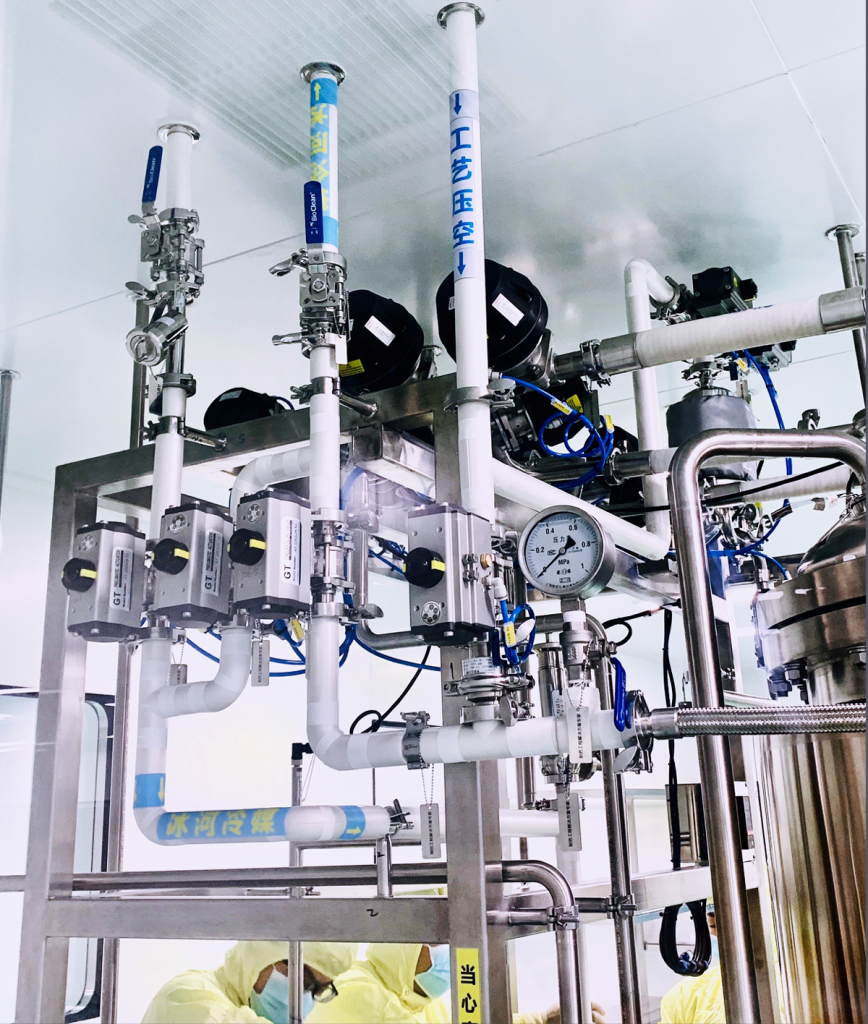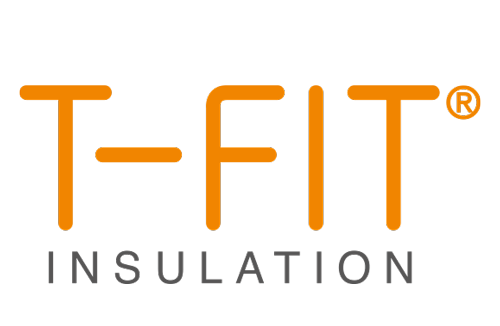FAILING INSULATION COULD LEAD TO CATASTROPHIC FAILURE IN A CLEANROOM ENVIRONMENT

The materials employed must combine chemical stability, durability, purity, and fire resistance; they must shed no particulates and emit no VOCs; they must prevent the development of mold, fungi and other microbial species; and they must be robust enough to withstand aggressive chemical and high-temperature cleaning. Poor performance in any of these areas can have catastrophic consequences, from costly production downtime to the contamination — and consequent destruction — of entire production batches.
Because the pharmaceutical cold chain effectively starts in the cleanroom, choosing the right insulation is a crucial first step in maintaining quality. As is clear from the checklist of features just described, the cleanroom environment is a challenging one for insulation, and the challenges are especially apparent in the pipework and ducting that provide the essential underpinning of the cleanroom’s functions.
An effective pipework insulation solution must perform a number of functions, starting with preventing condensation, a common cause of contamination. Condensation will form on chilled process pipework if the temperature at the pipe’s surface falls below the dew point of its environment. Uncontrolled, condensation can lead to corrosion of the pipework. To prevent this happening, it is necessary to raise the surface temperature of the pipework above the dew point, so that droplets do not form on the surface of the insulation.
At the same time, the chosen solution must deliver peak performance on pipes that are subject to wide temperature variation — chilled one moment, then subject to high-temperature steam cleaning the next. A wide operating temperature range is therefore essential.
A further factor to consider is space — or rather the lack of it — because space is usually at a premium around cleanroom pipework. Choosing insulation with a slim profile and compact footprint is therefore critical, to successfully negotiate complex, congested pipe runs. It needs to also be aesthetically pleasing to maintain the clean connotations that a cleanroom typifies. And then there are questions such as ongoing maintenance, which needs to be as straightforward as possible, and the service life: you don’t want to be interrupting production every few months to replace worn out insulation.
Chinese biological products developer and manufacturer Shenzhen Kangtai faced all these issues when the company expanded and upgraded the cleanroom manufacturing facilities at its Shenzhen headquarters. A review of the cleanroom environment was part of a companywide program of investment in production processes and identified several areas where insulation could be improved. These included replacing the existing rubber insulation, which was too thick and bulky to be used in parts of the pipework where space was tight. In addition, maintaining the necessary stringent levels of cleanliness took more time and effort.
Further challenges were posed by a testing combination of high- and low-temperature pipe runs. Steam lines operating at 130-160°C – 266°F – 320°F not only consumed excessive energy but raised safety issues for cleanroom staff, while low-temperature chilled water lines (2-5°C) – (35.6°F – 41°F)
caused condensation and energy loss.
The Shenzhen Kangtai project team considered several possible solutions before deciding on the T-FIT® Clean insulation product range. T-FIT® Clean is manufactured exclusively from ZOTEK® F42HTLS closed-cell Kynar® PVDF foam and offers a number of features that matched Shenzhen Kangtai’s requirements. These include an operating temperature range of 0°C~150°C – 32°F-302°F, low VOC and thanks to the closed-cell structure helps prevent corrosion under insulation (CUI) while offering a smooth surface that is easy to clean. In addition, with a thickness of just 6.35mm – 0.25” T-FIT® Clean fits into the smallest spaces to effectively insulate even the most complex pipe runs.
Shenzhen Kangtai also appreciated the ease with which T-FIT® Clean can be installed, with a minimum of fuss, tooling, or disruption to any cleanroom operation. Because it is guaranteed to be particulate-free, installation can take place during production, without the need for PPE or special containment requirements such as tents or hoods. In the case of Shenzhen Kangtai, the installation involved hardly any interruption to production. In total, installation took under one month, and for 80% of that time production continued uninterrupted.
Three-stage process
These characteristics are the direct result of the unique three-stage manufacturing process developed by Zotefoams, which uses pure nitrogen as a foaming agent to create a premium foam with significant advantages over products expanded using chemical foaming agents.
In Stage 1 pure PVDF polymer is extruded into a solid slab, then physically crosslinked using irradiation. As a result, the polymer chains that make up the material are joined by chemical bonds, and these linkages give the material thermal stability, high strength and toughness compared to non-crosslinked materials. Stage 2 applies extremely high pressures and temperatures to dissolve the nitrogen gas into the solid slabs. In Stage 3 the nitrogen-saturated slabs are put through a second, lower-temperature cycle where the pressure is released to allow the free expansion of the material into sheets of foam.
The result is a fine, completely closed-cell structure that is fiber-, dust- and particulate-free, and highly resistant to bacteria and mold growth. T-FIT Clean’s ASTM G21-tested performance on zero fungal growth brings long-term protection against the risk of product contamination. Inherently hydrophobic, the technology also prevents condensation and moisture. For high-temperature environments, T-FIT® Clean offers exemplary fire safety credentials. Rated 5/45 per T-FIT Clean according to ASTM E84 for surface burning characteristics of materials, T-FIT Clean delivers the lowest flame, smoke and toxicity rating of any polyester/elastomer insulation.
A wide operating range — from -80°C to +160°C -112°F to +293°F — enables T-FIT insulation to perform at both chilled process temperatures and high cleaning temperatures without any loss of thermal performance, and so can be used on pipework subject to ‘clean in-place’ processes. Compared to open-cell materials, T-FIT more effectively reduces moisture and gas penetration through the material
Fast, easy installation
T-FIT’s flexible, slimline tubes are easily adapted to the demands of complex, congested pipe runs featuring unusual bends or hard-to-reach areas. The tubes are complemented by matching tees and bends, installation is quick and simple, and so it’s easy to integrate, reducing labor costs, downtime and the Total Cost of Ownership. Because the advanced cellular materials are intrinsically pure, odor-free, and non-toxic, no harmful chemicals, fibers or dust are given off during installation or the lifespan of the product.
